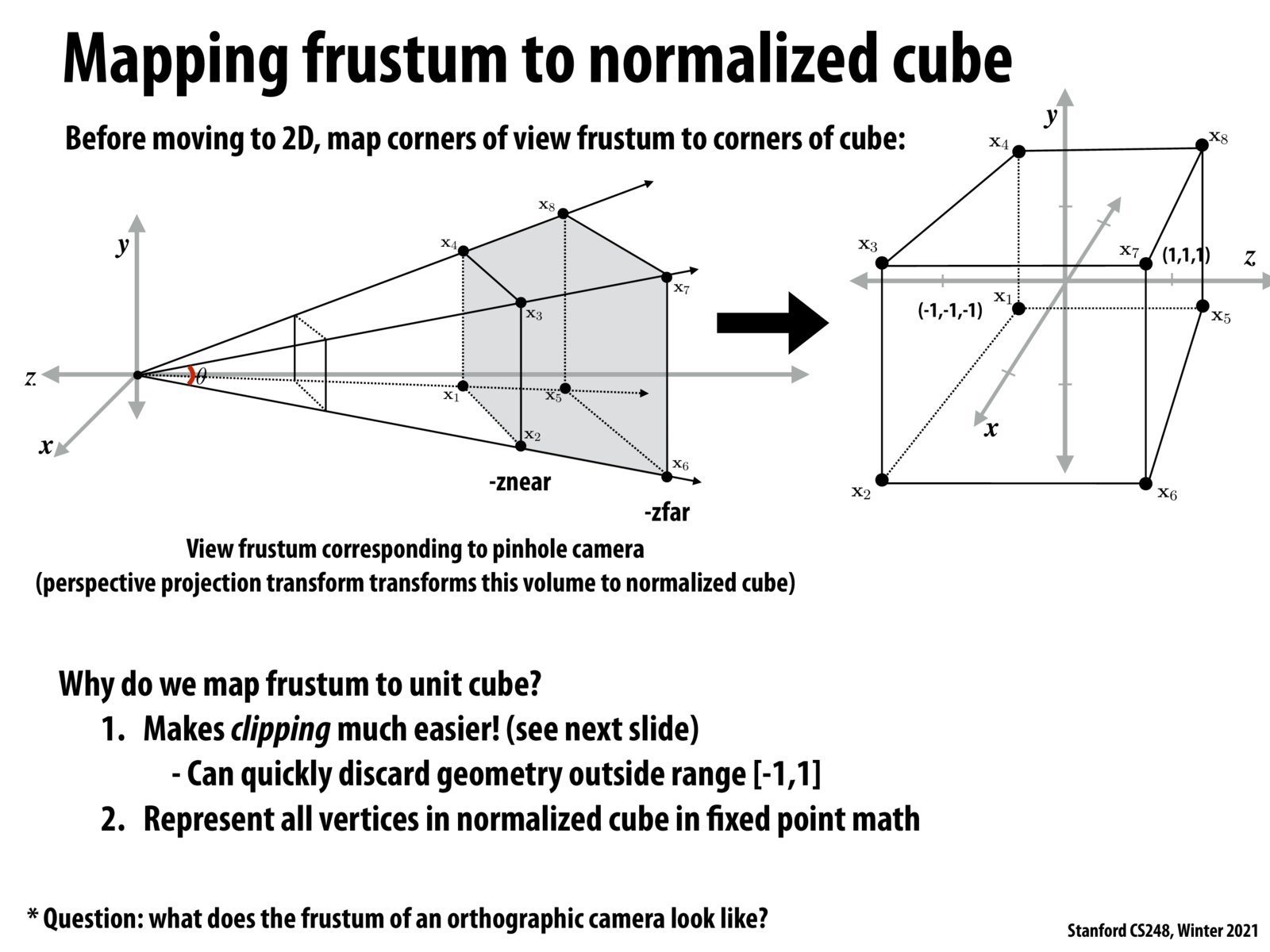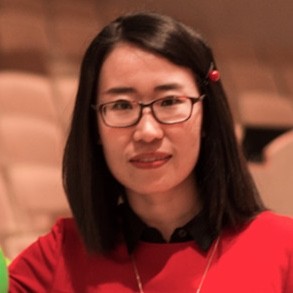


I have one question: is the formation of this cube depending on the resolution / size of the screen? For example if I'm eventually displaying the 3D object on a 640480 screen or a 720480 screen, would the way we choose the cube / camera scale be different?

@henryw7, it wouldn't affect for this mapping. Slide 19 shows the transform matrix. The screen resolution would factor in this transformation.

Is it possible that this mapping for large number of vertices becomes more computationally expensive than just using the original frustum?

@chii I don't think so, the two points at the bottom of the slide seem to still apply as the number of vertices increases.

When we map from the frustum to a normalized cube, does the mapping to go from a trapezoidal prism into a cube result in scaling issues that need to be compensated for when mapping the cube onto a 2D surface with perspective projection?
Please log in to leave a comment.
The frustum of the orthographic camera is cuboid, it means the near clipping plane and far clipping plane has same size.